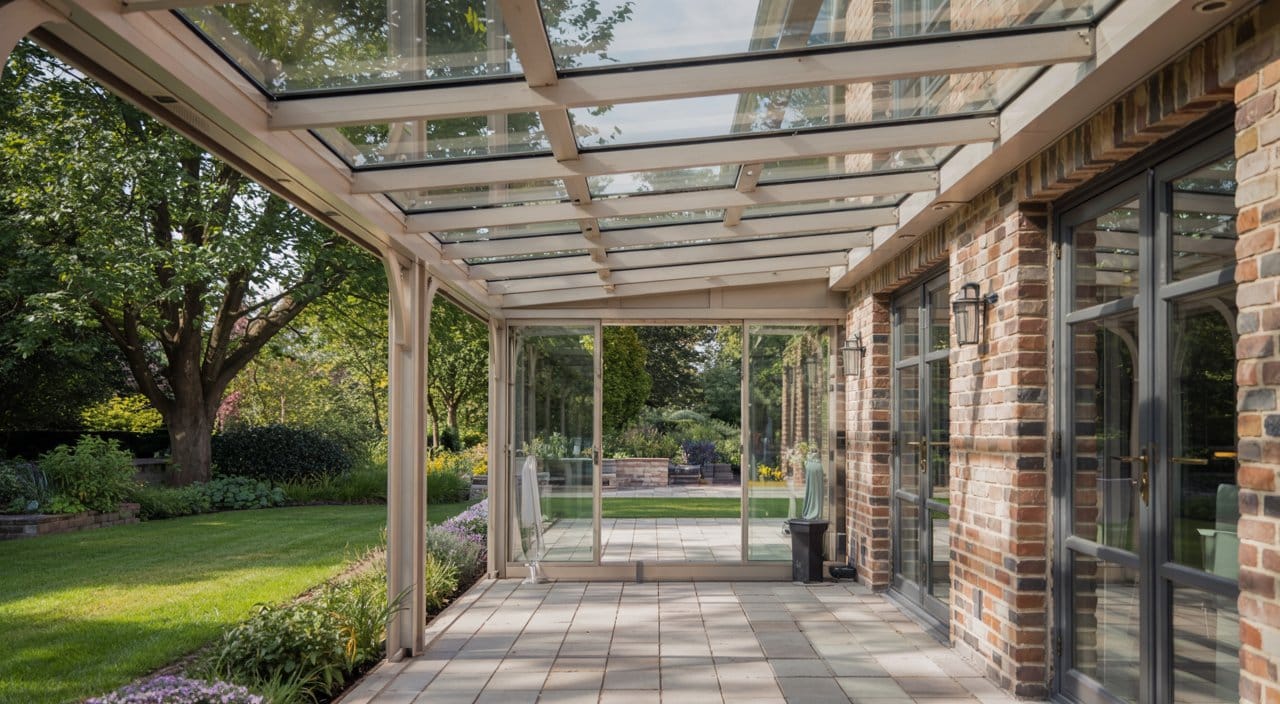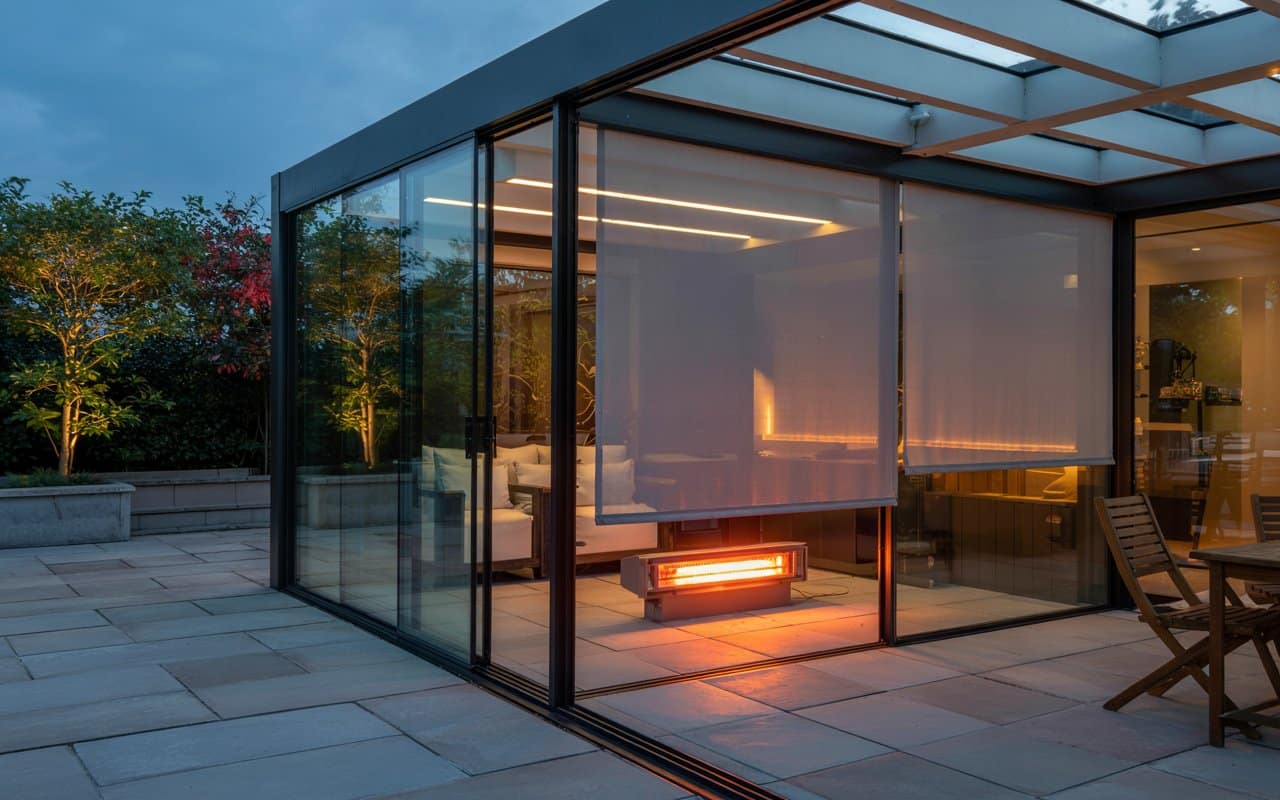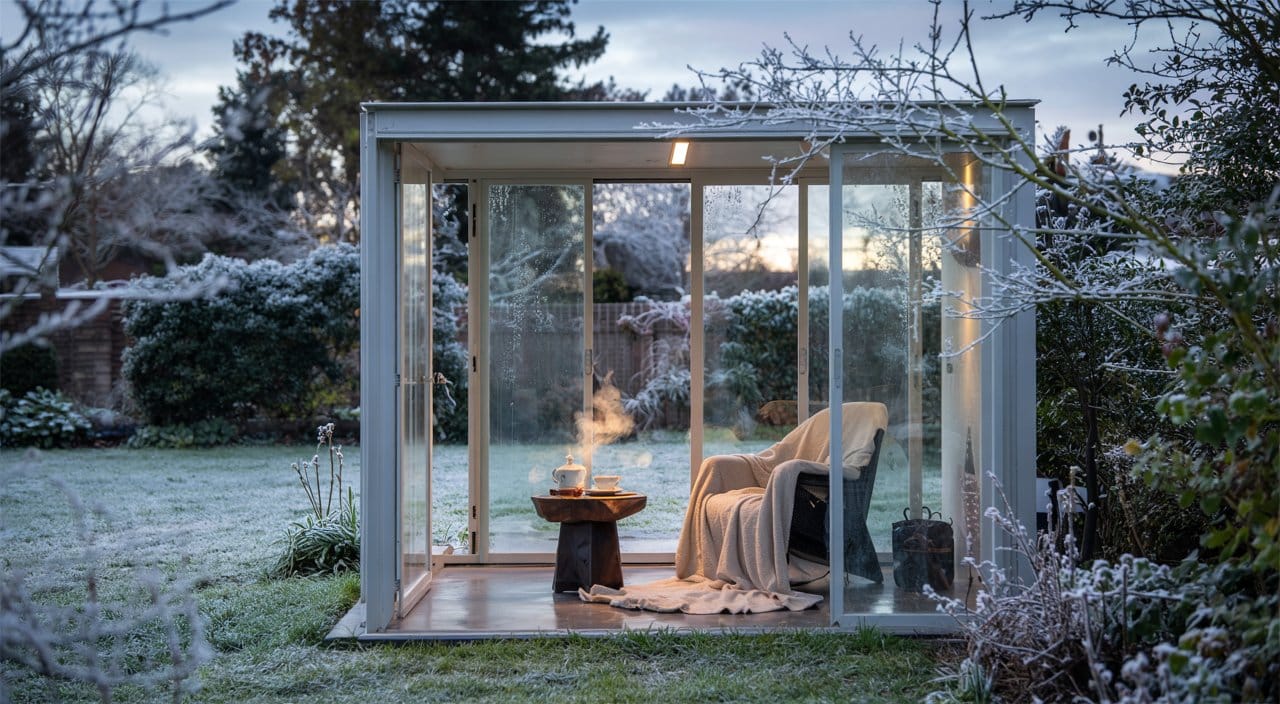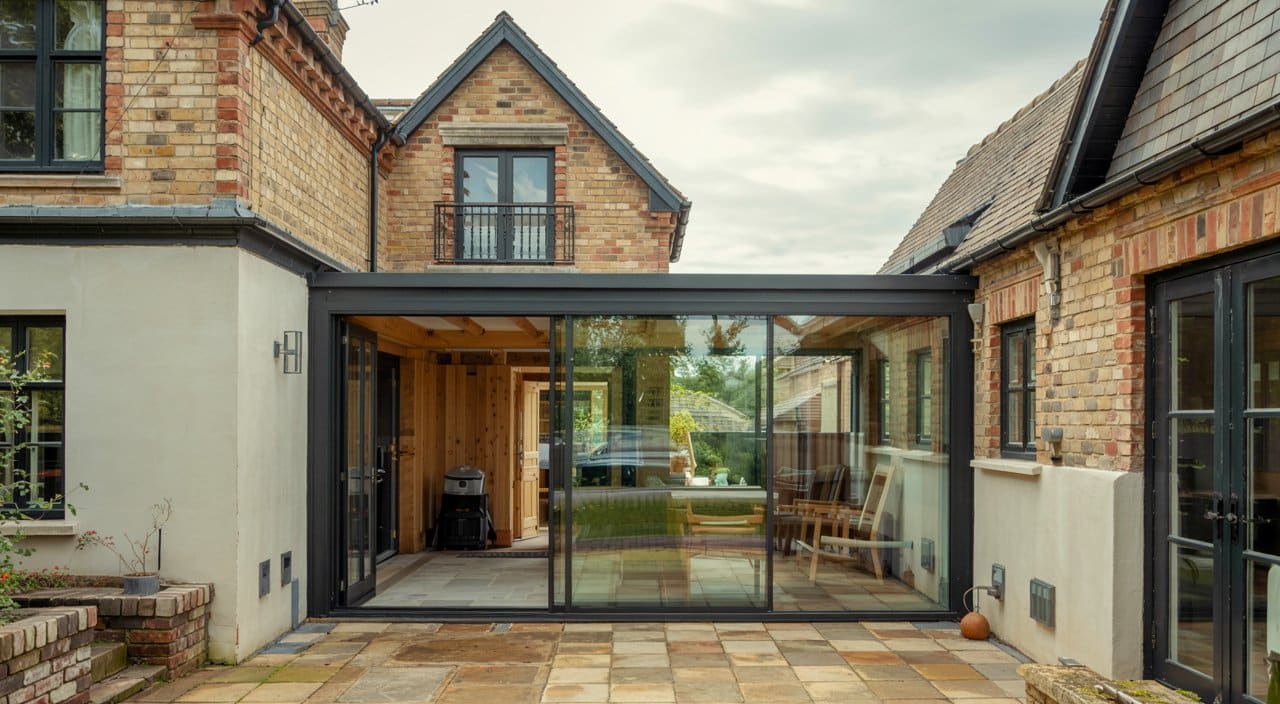What to Expect When Installing a Glass Veranda (Without the Stress)
Few things disrupt the dream of seamless indoor-outdoor living more than the lingering friction of uncertainty: Will your investment extend enjoyment or unravel peace with hidden surprises? As the seasons shift, patios remain dormant, gardens left unvisited, and the invisible border between comfort and nuisance stands unchallenged. The promise of a glass veranda is more than shelter—it is the conversion of fleeting garden days into permanent moments of home. Yet for many, apprehension about complexity or disruption leaves aspirations for transformation on perpetual hold.
“For the first time, our garden feels connected to our lives whatever the forecast decides.”
Year-Round Comfort and Expanded Living
A properly planned glass veranda doesn’t merely add a roof; it unlocks all-season utility for your property. Whether you seek a bright breakfast room, a rain-shielded reading spot, or a nightlife-ready alfresco dining area, the best installations erase seasonal limitations. Our verandas leverage light, protect against weather, and blend architectural lines with the natural flow of your home. You gain floor space and emotional space—places for solitude or togetherness, for busy mornings or calm evenings, for last-minute entertaining when the British sky was supposed to “clear” but didn’t.
Addressing the Source of Home Improvement Stress
Regret is rarely the result of a single mistake—it grows from a lack of clarity. Missed steps in planning, fuzzy project scopes, and ambiguous guarantees form a trail of stress that travels from initial enthusiasm to post-build regret. Every successful project, by contrast, is marked by transparency: a discrete sequence of mapped steps, explicit communication, and a culture of collaborative problem-solving. Instead of hoping issues won’t arise, anticipate and resolve them before the installers arrive.
Visual and Financial Benefits
- Visual harmony: Clean, modern lines integrate with the house, avoiding the “add-on” look.
- Property value uplift: Homeowners report increases in appeal, valuation, and marketability.
- Energy regulation: With appropriate glazing choices, verandas offer passive heat gains in winter and tailored shading in summer.
Project Sequence with Peace of Mind
- Preliminary consultation
- Design & customization
- Regulatory review
- Installation planning
- Onsite build
- Handover & aftercare
Each phase reduces risk and reinforces your sense of control, guiding you toward an upgrade that feels earned—not endured. The right partner—like The Outdoor Living Group—ensures your journey is marked by delight, not trial. See our project gallery to envision just how different your property can feel.
Why Is Planning & Personalization Essential for Veranda Success?
In every disappointing home upgrade, the root cause generally lies upstream—generic planning, hurried selections, or lack of personalised touch. Many homeowners approach veranda projects hoping to sidestep friction only to find themselves with a structure that fails to elevate their lifestyle or, worse, creates new pain points.
“I realised halfway through the planning that every detail—light, privacy, slope—changed how we’d use the space. Thank goodness every step was bespoke.”
The Imperative of Bespoke Consultation
Personalised planning begins with the acknowledgment that every property—and every family—uses space uniquely. Our approach puts genuine consultation first: site surveys that examine both the landscape and your daily routines, discussions that prioritise comfort patterns, expected use, and aesthetic alignment with the existing home.
Elements of an Effective Consultation:
- Sun path mapping to prevent glare and dark spots.
- Privacy assessment with consideration for neighbouring views and traffic.
- Material selection not just for style, but longevity and ease of care.
- Colour harmonisation using full-spectrum RAL options to ensure the veranda never feels like an afterthought.
- Layout flexibility—will your veranda need provision for sliding glass walls, heating modules, or discrete LED lighting now or later?
Design Approval and Decision Points
Finalising these details well before a single panel is measured safeguards you from scope creep, last-minute costs, and visual regret. Every approved element is documented, signed off, and referenced during installation—creating a chain of custody from vision to handover.
Preventing Future Regret
Poor fits, wasted corners, and unexpected shade or exposure happen when trade-offs are forced at the eleventh hour. Our process delays nothing for later and never rushes choice. A well-planned veranda matches your living, not just your house. Start your vision session to ensure every benefit is built in before day one.
What Regulations and Permissions Must Homeowners Navigate?
Nothing punctures progress like a council letter or planning dispute after the build begins. Navigating regulations can feel labyrinthine—yet handled correctly, this is where our expertise turns anxiety into assurance.
“They translated council requirements into plain steps and handled all the paperwork—neighbours never raised a single concern.”
Planning Permission: The Variables That Decide
Glass verandas straddle jurisdictional boundaries, and not just those bordering two gardens. Most suburban homes stay within permitted development if the structure remains below 2.5m at the eaves, is under three metres deep, and maintains the right boundary offsets. Exceed these, or live in a conservation zone or near a listed property, and you’ll need formal approval.
Key Regulatory Triggers:
- Size and Depth: Exceeding permitted sizes requires full applications.
- Height and Proximity: Limits exist for builds near boundaries or sidewalks.
- Designated Areas: Listed buildings, conservation areas, and properties with stipulated covenants must always engage planning authorities directly.
Party Wall, Building Control, and Documentation
If your project touches a party wall, is close to a neighbour, or involves foundations deeper than those already in place, the Party Wall Act applies. Building Regulations kick in with integrated electrics or weight-bearing loads: all are addressed by checklists, preemptive communication, and full documentation through our process.
| Regulatory Area | Trigger Condition | Solution Path |
|---|---|---|
| Planning Permission | Over 2.5m eaves or 3m depth; special sites | Full application; neighbour notifications |
| Party Wall Notice | Within 3m of neighbour’s structures | Written notice, agreement forms |
| Building Regulations | Electric, heating, or heavy structural changes | Inspector sign-off, technical submission |
Trust matters most when paperwork becomes the battleground. With The Outdoor Living Group, we shield you from procedural missteps and bureaucratic ambiguity, maintaining momentum where so many projects stall. Download our planning checklist to see the full project path at a glance.
How Do Credentials and Experience Set Installers Apart?
A glass veranda means nothing if it stands on weak expertise or unproven guarantees. When you entrust your home’s exterior to a partner, their credentials are your best insulation against future regret. Observing which accreditations, insurances, and skills are on show—and which are hidden—often reveals all you need to know.
“Only after comparing portfolios did I realise what a difference training and a written warranty make. Trust isn’t just a feeling; it’s evidence.”
Accreditations That Actually Matter
Not every badge has substance. For our installations, only manufacturer-approved (e.g., Weinor certified) teams oversee structural assembly or mechanical integration. Every member is trained to specific product standards, with records provided upon request.
What Sets Qualified Installers Apart:
- Comprehensive insurance—public liability, product-specific warranties, and installer indemnity.
- Track record—documented portfolios, photographic proof, and before-and-after visuals.
- Exclusive training—attendance at brand training, not “read the manual” qualifications.
- Routine audits and ongoing technical updates.
- Transparency—willingness to provide references, timelines, and copies of policies before the contract is signed.
Guarantee, Systems, and Support
Experienced installers run on checklists, not improvisation. Our projects flow from day-one site induction to daily milestones, safety reviews, and systemized quality controls. Warranty information isn’t buried in fine print; it is actively presented, discussed, and explained before you commit.
In choosing a veranda partner, price is a consideration but never the final word. Select on evidence, on the ability to answer detailed comparisons, and on the confidence that you’ll never face a hidden upcharge or scope reduction after work starts. Use our comparison table and portfolio as a checklist. Trust is a function of facts, not just feelings.
What Happens During the Day-to-Day Installation Process?
A well-executed installation is measured not by speed but by synergy—between your routines, your property, and the installers’ craft. Every day on site offers opportunities for stress or satisfaction.
Onsite Preparation and Communication
Before handover begins, the site is prepped and access routes agreed. Our teams brief you on daily work plans, expected noise levels, and any days that call for extra care with pets, parking, or household adaptation. You remain in the information loop and aware of which phase is underway.
Stepwise Structure of a Glass Veranda Instal:
- Day One: Site protection, marking, and initial frame positioning—every utility checked and confirmed.
- Mid-Instal: Glass handling with specialised equipment, fixings with anti-corrosion treatments, and parallel crossover between mechanical and aesthetic tasks.
- Final Days: Integration of features—LEDs, infrared heating, privacy screens—followed by an exhaustive snag-list review and collaborative sign-off.
“They swept up every night, kept me informed when weather called for tweaks, and handled every question with patient clarity.”
Cleanliness and Contingency
Our routine goes far beyond manual labour. Dust protection for interior and exterior zones, safe storage of materials, and next-day readiness all form part of the agreed standard. Interrupted by rain? We adapt with contingency measures, ensuring progress without leaving half-finished structures or dangerous setups.
By week’s end, what remains is not debris, but a new routine: coffee just outside your window, hosting friends no matter the forecast, a seamless extension of your best days.
Why Do Material Choices and Feature Innovations Matter Long-Term?
Every technical decision is a lived reality years from now. Choosing the right materials and features is the difference between routine satisfaction and chronic disappointment. The conversation around glass verandas often centres on visual lines—but durability, energy regulation, and future flexibility are what make those lines last.
Comparing Performance and Aesthetics
| Feature/Material | Enduring Value | Potential Pitfall |
|---|---|---|
| Laminated/Low-E Glass | Thermal efficiency, UV resistance, less glare | Increased cost if poorly specified |
| Powder-Coated Aluminium | Rust resistance, full RAL colour compatibility | Chipping if cheap finish |
| Modular Screen Options | Phased privacy, sun control, wind protection | Visual mismatch if non-integrated |
| Smart Controls & Sensors | Automated comfort, weather-responsive shading | Complexity if poor support |
| Integrated Heat/Lighting | All-season use, ambiance, safety certification | Add-ons poorly retrofitted |
Innovations That Change Usage Patterns
Features like frameless sliding glass walls, fully retractable screens, and architectural LED systems transcend “feature” status to become the architecture itself. Our most satisfied clients are those who saw beyond the glossy catalogue and insisted on future-proofing with modular add-ons and scalable utility—the comfort of knowing upgrades are easily supported.
- Passive heating, solar integration, and clean-line drainage prevent post-build backtracking.
- All controls and mechanicals are pre-verified for compatibility, reducing warranty claims and functional headaches.
- Every component is registered on instal for ongoing traceability and streamlined support.
The best verandas age gracefully—protected from fashion, weather, and shifting routines.
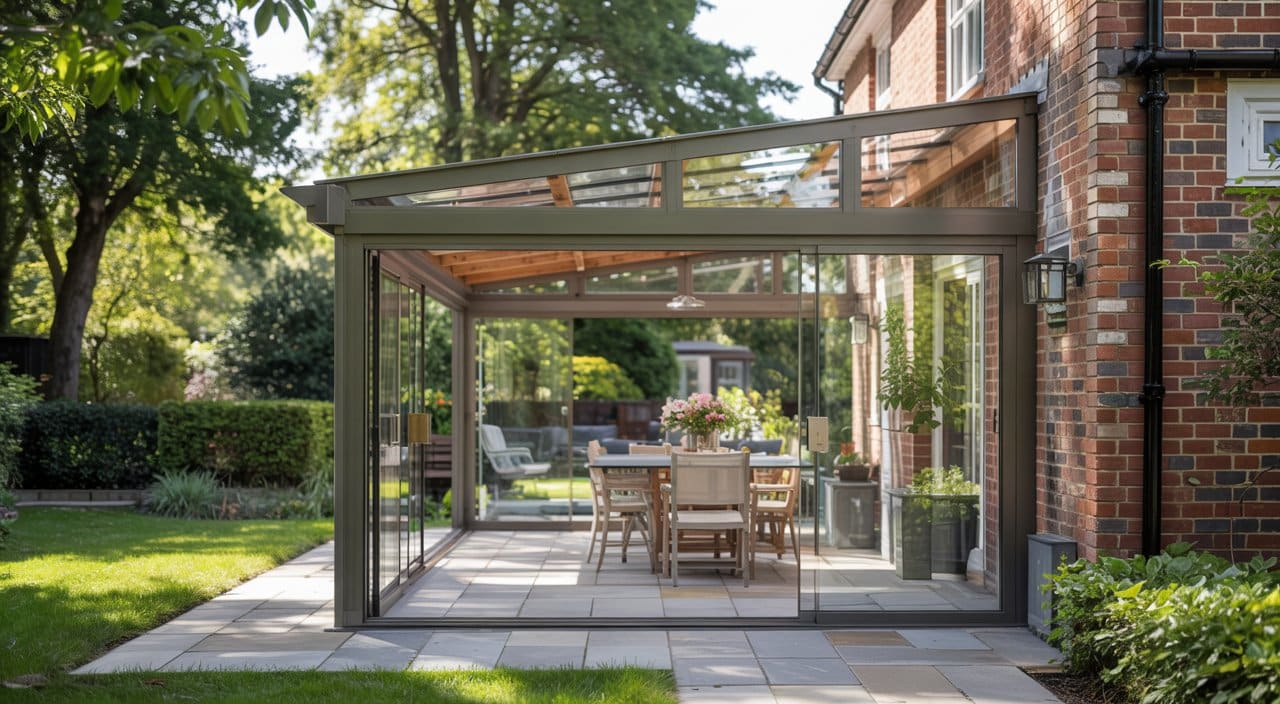
How Does Aftercare, Warranty, and Futureproofing Secure Your Investment?
A successful veranda project does not end at handover—it builds, season after season, into the fabric of your property and daily life. Aftercare, maintenance, and the possibility of future upgrades are not upsells but pillars of satisfaction. The modern customer measures value not just by initial impact but by long-term reliability.
Proactive Warranty and Maintenance System
Our aftercare starts with the essential: warranty documentation activated at handover, full explanation of coverages, and clear contact channels for future support. We schedule reminders for annual health checks and provide maintenance packs—glass cleaning, gutter clearing, and low-impact checks on integrated systems.
“We know who to call if we want a check-up, and seasonal guides landed without me asking.”
Components of Our Aftercare Model
- Registered warranties: Always accessible, transferable with property.
- Annual optional service: Onsite review, upgrade discussion, and eco-efficiency assessment.
- Responsive hotline: For queries, troubleshooting, or advice on weather-related prep.
Seamless Upgrade Paths
Our modular systems mean you can add side glazing, privacy screens, or patio heaters when routines or needs change. Loyalty programmes offer priority booking and referral rewards, embedding value in every stage of ownership.
Ongoing Value and Confidence
Our promise is not just installation but the guarantee of ongoing value: a structure that welcomes every season, adapts to every family change, and preserves your peace of mind. Contact us for your aftercare guarantee or explore our upgrade modules whenever your needs evolve.
For a Free Design Consultation, Contact The Outdoor Living Group Today
Every question, every uncertainty, is a sign that you care—about your comfort, your property’s value, and your family’s peace of mind. Our process is built on listening first and designing with you, not at you. With a track record spanning homes styled from classic to contemporary, meticulous compliance, and a service culture defined by satisfaction long after installation, The Outdoor Living Group delivers glass verandas engineered for every British season.
- Book your bespoke design session with our consultants—discover real solutions, real value, and real calm.
- Explore finished project images matched to homes like yours and experience testimonial-driven trust.
- Unlock your property’s true potential with a no-ambiguity consultation—every design, every regulation, every installation stage, handled with care.
- Benefit from fast-track planning guidance, full aftercare, and ongoing support—the journey never ends with a signature.
- Let your garden become home—without the stress, with all the right reasons.
Frequently Asked Questions
What Should You Expect During the Day-to-Day Installation Process?
Every transformation of your home is a choreography—a blend of anticipation, minor chaos, and, when executed with discipline, an almost invisible transition from planning to new daily life. Uncertainty about how installers operate, what happens to your garden during construction, or whether routines will be upended can easily deter homeowners from seizing the opportunities outdoor living provides. Our methodology replaces that uncertainty with a proven rhythm, layering communication and craft around your routine, not against it.
The Arrival: Preparation as Partnership
On day one, the team sets a foundation not just for the veranda but for a respectful presence. Arrival is always predictable, with pre-agreed hours and clear project handover. Shared walkthroughs ensure any fragile plants, treasured surfaces, or family patterns—dog runs, school pickups—are protected before the first tool is unsheathed.
- Site Protection: Surfaces are shielded, boundaries taped, and any high-traffic pathways covered for safety and cleanliness.
- Access Planning: Heavy materials move along pre-cleared routes to avoid damage to grass, flowerbeds, or tiles.
- Family Safety: Schedules for high-noise activity are shared, allowing you to manage children, pets, or home working around disruption.
“Three days in, the only thing louder than the tools was our laughter—the team had become part of our morning routine.”
The Cadence of Construction
Rather than a blur of hammering and dust, daily operations unfold in intentional micro-phases. Communication anchors these steps: you receive briefings on progress, the objectives for the day, and, should conditions change, a direct and honest update—never a surprise.
Typical workday sequence: 1. Set-Up & Inspection: Ensure all tools and materials are placed in agreed locations; inspect that protection remains in place. 2. Framing & Foundation: The critical stage where laser levels maintain alignment, and anchor bolts are tightened for safety. 3. Glazing & Features: Each glass panel is manoeuvred, sealed, and secured—no rush, every step checked for invisible flaws. 4. Feature Installation: Attach LED tracks, fit heaters, or mount privacy screens precisely according to specification. 5. Midday & End-of-Day Clean: Sweep, bag, and clear—no day ends with debris in your view or dust at your threshold.
Contingency? Weather delays, unexpected site conditions, or a change in your schedule spark negotiation and adaptation, not rigidity. We agree on shifts hour by hour, never demanding your routine bends to the build.
Seamless Progress, Zero Chaos
Throughout, the project manager or lead installer remains a presence, balancing technical focus with human empathy. Every question—about technical choices, aesthetic tweaks, or simply “Will you be done in time for Saturday’s barbecue?”—gets answered with clarity, not deflection.
- Snag Protocol: Small issues—a mark, a nick, a question—are logged on the spot, not left for you to find.
- Weather Responses: Work is designed to pause and resume without leaving the site exposed; nightfall always sees the zone safe and accessible.
- Final Session: On the last day, the project is reviewed not by us, but with you. All functions are demonstrated in-situ, and you advise us when you are satisfied, not the reverse.
The Installer’s Day: Table Overview
| Stage | Team Activity | Homeowner Experience | Notes |
|---|---|---|---|
| Arrival | Arrival, briefing, protection setup | Invite to review plan | Meet team leader |
| Morning Build | Fixing frames, prep for glazing | Normal access, some noise | Check in allowed |
| Glazing/Features | Glass handling, instal accessories | Minimal disruption | Supervise if desired |
| Early Afternoon | Electrical/component fit and seal | See progress—photos taken | Upgrades possible |
| End of Day | Site cleanup, safety check | Use garden when safe | Notes left for review |
Why This Matters
This choreography is not accidental. By orchestrating every movement around your comfort, we dismantle age-old stories of chaos during home projects. You never experience a day where the garden is “off limits,” nor is your time held hostage to unpredictable progress. Each step is mapped to sustain comfort, stability, and a sense of control, turning a source of worry into an arc of anticipation.
Why Do Material Choices and Feature Innovations Matter Long-Term?
The moment a glass veranda moves from blueprint to reality, every specification you selected becomes the architecture of your daily life—determining ease, utility, beauty, and cost. Too often, decisions are coloured by catalogue gloss, not lived durability or future flexibility. We believe material and feature selection is not a matter of style alone; it’s your guarantee of enduring performance and adaptive space.
Glass: More Than Transparency
Not all glass is created equal. We favour laminated, low-emissivity panels, engineered to absorb daylight without transmitting heat in summer or robbing warmth in winter. This material enhances energy efficiency, resists glare, and requires minimal cleaning—attributes homeowners appreciate long after trends evolve.
Frame and Finish: Visual & Structural Resilience
Powder-coated aluminium is our foundation of choice, adapted to over 200 RAL colours for flawless blending with your façade. Its resistance to rust and weathering secures a polished look without hours of upkeep.
Modular Upgrades & Smart Innovation
Our verandas anticipate change. Each installation includes defined integration points, allowing you to add privacy screens, automated shading, or heating—not just when fashion changes, but when your lifestyle dictates expansion.
Lifetime-Value Matrix: Feature vs. Longevity
| Feature | Short-Term Benefit | Long-Term Impact |
|---|---|---|
| Low-E Laminated Glass | Immediate comfort, less glare | Lower heating/cooling bills |
| Durable Powder-Coated Frames | Visual wow, colour match options | No corrosion, easy clean |
| Modular Integration Points | Expands use cases | Accessories add value easily |
| Smart Sensor Integration | Hands-off, weatherwise comfort | System updates futureproof |
The Role of Innovation
- Weather-reactive controls: Rain and wind sensors that automate awnings, blinds, and louvres, keeping your space protected—without a single switch flip.
- Integrated LED and infrared heating: Lighting and warmth should be seamless, fading in and out with the sun, enhancing long evenings and early-morning solace.
- Safety certifications: All moving parts and live systems conform to the highest standards for load, insulation, and accident prevention.
A premium glass veranda is not a frozen moment in time—it’s an ecosystem designed to adapt and perform, no matter what the seasons, or your family, demand.
How Does Aftercare, Warranty, and Futureproofing Secure Your Investment?
Your satisfaction with a glass veranda isn’t measured solely at the unveiling; it endures in every quiet moment or stormy afternoon months and years later. A robust aftercare and warranty system is not a marketing promise—it’s the bedrock upon which the longevity of your investment rests.
Triggering Peace of Mind: The Warranty Enrolment Process
After final checks, your warranty is immediately logged—no forms lost, no delayed coverage. We provide:
- Dated and signed warranty cards—evidence not just of a promise but a protocol.
- Direct hotline access—for every question, fault, or maintenance request.
- Annual check-in invitations—optional but encouraged, to ensure fit, finish, and features remain optimal.
What Makes Aftercare ‘Premium’?
- Transparent Response Times: Emergencies are not routed to distant call centres. Team members who installed your structure coordinate on support.
- Cleaning & Maintenance Kits: You’re equipped with the right tools and tips for routine care—glass clarity, drain maintenance, and climate-responsive accessories.
- Upgrade Pathways: As your needs change, service plans and add-ons (from screen retrofits to new heating elements) are presented at pre-arranged intervals—a futureproofed experience that keeps the space in tune with your life.
Service Table: Standard vs. Premium Aftercare
| Service Element | Standard (Typical) | Ours (Premium) |
|---|---|---|
| Coverage Length | 1–2 years | 5–10 years, renewable |
| Contact Method | General customer service | Dedicated team/direct line |
| Maintenance | On request | Scheduled annual or seasonal |
| Upgrades | User must pursue | Offered proactively, at intervals |
| Inspection | Rarely included | Routine, planned |
Loyalty and Client-For-Life Systems
Our approach is defined by more than preventative maintenance—it’s a steady expansion of value. If you refer new clients, you receive priority for upgrades, early access to new accessory launches, and additional inspection benefits.
“Every time we had a new idea, the team treated it like the next project, not an afterthought.”
Optimal aftercare doesn’t stop with reassurance; it actively builds equity in your living space year after year.
For a Free Design Consultation, Contact The Outdoor Living Group Today
Visualising the perfect veranda often creates more questions than it answers: How will it look with your home’s style? How does it handle the unique quirks of your property? Can you trust that your schedule (and nerves) will be respected? True peace of mind only arrives when every point of friction—timing, transparency, compliance, and care—meets a solution shaped around you.
A Customised Invitation
- Direct Engagement: We begin with your questions, not our agenda. Consultation is a dialogue, not a demonstration.
- Personalised Walkthroughs: See past projects, discuss material samples, map sun angles—all tailored to your routine.
- Immediate Feedback: Get answers about timelines, costs, and compliance while you explore design options at your own pace.
“Getting started felt daunting, but after one visit the path forward became obvious—and entirely stress-free.”
Our expertise becomes your advantage. Booking a session is the simplest way to unlock the value, security, and pride your property deserves. Take the next step. Arrange your design session—discover why control, comfort, and architectural harmony start with a conversation, not a contract.
How Can I Prepare My Home and Garden for a Smooth Glass Veranda Installation?
Every home improvement project brings both hope and hesitation. You might imagine breezy brunches in filtered sunlight, but anxiety lingers: will this renovation upend your routine, scatter garden treasures, disturb your pets, or test your patience with endless tidying? Peaceful transformation isn’t luck—it’s the outcome of meticulous pre-instal preparation. The right groundwork ensures installation doesn’t encroach on your life but instead unlocks the new lifestyle you envisioned.
“Preparation turned nerves into calm—having the furniture cleared and a plan for the kids made the week feel effortless.”
What Steps Should Be Taken Before Installation Day to Minimise Disruption?
1. Move and Protect Garden Valuables
Remove anything that risks dust, scratches, or accidental bumps.
- Relocate patio furniture, plant pots, and decorative accessories well outside the work zone.
- Shield garden beds adjacent to the instal area with lightweight fabric or temporary barriers.
- Store away outdoor equipment and delicate ornaments likely to collect dust during construction.
2. Clear Access Routes and Work Zones
Smooth, obstacle-free access minimises the risk of damage and accelerates daily progress.
- Unblock gates and pathways from the street to your future veranda.
- Secure pets and ensure their routines won’t intersect with installers or equipment.
- Move bins, bicycles, hoses, and clutter off all approach routes and away from staging areas.
3. Communicate With Installers About Routines and Risks
Open discussion removes surprises—not just for you, but for the professional team transforming your home.
- Share school run times, nap schedules, and any sensitive noise windows.
- Highlight underground hazards: ponds, irrigation pipes, or shallow cable runs.
- Ask for a pre-installation checklist—request a walk-through to clarify where tools will reside, what garden zones are at risk, and when access is off-limits.
4. Notify Neighbours and Plan Utility Access
Respect for those around you builds goodwill—and could avert complaints that slow the work.
- Inform neighbours of start dates and expected levels of activity or noise.
- Coordinate utility access and safety checks—outdoor lights, switches, and water lines are often part of the workflow.
- Ask about required clearances; even a skip for construction waste needs to be planned.
5. Anticipate the First Day’s Rhythm
The momentum of the instal hinges on your readiness.
- Organise early drop-offs and material staging the evening before.
- Secure entry points—consider temporary codes for trusted teams if you’re away.
- Keep valuables (outdoor and indoor) away from direct traffic, not least because dust and swinging tools make poor companions for heirlooms.
Proper planning creates a stage for progress—and ensures your first interaction with our installation team is one of confidence, not control. A smooth start always cascades into predictable, stress-free momentum.
What Are the Most Common Mistakes Homeowners Make with Glass Veranda Projects?
Anticipation fades when reality doesn’t match the glossy brochure. The right design, poorly executed, still leads to regret. The most common pitfalls stem not from ambition but oversight—unquestioned assumptions, unchecked details, or delegated responsibilities that deserve owner review.
“The veranda looked great on paper, but we discovered mid-build that the old concrete slabs weren’t level. A preventable oversight cost us two extra days and gnawed at our nerves.”
Why Do Some Installations Lead to Regret, and How Can You Avoid These Pitfalls?
Rushing or Skipping Professional Measurements
- Eyeing space by “feel” or relying on legacy plans causes framing or drainage misalignments.
- Level checks, load testing, and slab inspections by a pro catch problems invisible to untrained eyes.
- Accepting “close enough” is an invitation to warping, leaks, or rattles when wind or rain arrives.
Neglecting to Clarify Planning Permission and Boundaries
- Failing to check planning regulations can result in legal orders to alter or even remove your new addition.
- Proximity to boundaries rarely matches guesswork; always confirm with survey data and council guidelines.
- Overlooking conservation area or party wall implications creates disputes that stall or derail progress.
Choosing Style Over Suitability
- Glass that dazzles in the showroom may amplify heat or become unreadable with glare on your property.
- Selecting finishes for today’s mood—ignoring long-term weathering—often leads to maintenance frustration or colour mismatch in a year.
- Ensure materials and styles harmonise function, not just immediate aesthetics.
Overlooking Warranty, Aftercare, and Upgrade Options
- Failing to scrutinise warranty depth, aftercare promises, and compatibility for future upgrades (lighting, heating, screens) locks you into costly options, surprise exclusions, or dissatisfied support when needs evolve.
- Check where responsibility lies: is the warranty with the installer, manufacturer, or lost in legal grey?
Missing Detail in Quotes and Inclusion Lists
- The cheapest quote is rarely the best—low numbers often mean corners cut on prep, disposal, debris management, or aftercare.
- Insist on itemization and written confirmation for each scope of work, integration, and system tested before handover.
A mentality of relentless checking—measurements, permissions, and small print—protects your build’s momentum and long-term joy. Let vigilance, not optimism, be your guide to a project that enhances rather than undermines your home’s comfort and value.
How Do Planning Permissions and Regulations Vary Depending on My Location or Property Type?
You may encounter guides that paint permissions as simple; reality is less forgiving. London terraces, rural listed houses, or compact city plots trigger vastly different protocols. The law sees no difference between dreams and plans—only compliance and process.
“We assumed permitted development covered us. After local review, a heritage notification was needed. A three-week delay felt endless compared to a day of checking up front.”
Where Might Local Laws or Conservation Rules Affect Veranda Installation Requirements?
Conservation, Listing, and Historical Contexts
- Heritage or conservation area status imposes tighter controls, from design to materials and even colour palettes.
- Listed buildings bring another layer: external changes require listed building consent, sometimes even for glass type or gutter shape.
- Early council engagement smooths planning, helping spot objections before they escalate.
Council, Block, and Street-Specific Guidelines
- Some local authorities enforce stricter limits on projection, eaves height, or public visibility—especially for properties adjacent to streets, public footpaths, or protected views.
- Apartment or maisonette? Freeholder approval tops the list before any external work starts.
Party Wall and Boundary Notices
- Attach a veranda near a boundary wall, and you may need to serve notice to neighbours.
- Urban infill or terrace homes with shared walls must comply with the Party Wall Act—a process requiring signed, written permission.
- Consent is more easily negotiated in person well before paperwork is served.
Proactive Communication for Compliance
- Initiate dialogue with planning officers at concept stage, not after finalising a proposal.
- Document phone calls and email responses, creating a chronological “paper trail” for agents or property sale.
- Consider appointing a planning consultant for layered permissions—especially when the cost of delay dwarfs their fee.
When to Ask for Specialist Help
- When documents or local bylaws baffle, even briefly, consult a planning or legal expert: cost is repaid by speed and certainty.
- If you anticipate later upgrades (enclosing sides, adding heating), clarify with the council whether this future flexibility needs explicit permission now.
Permissions and regulations are best managed as the first milestone, not the last task. Build momentum by securing approval. Only then do design and delivery follow, friction-free.
Can I Upgrade or Modify My Glass Veranda in the Future, and What Should I Consider?
No accomplishment is static. Needs change—families expand, hobbies multiply, climate surprises prompt adaptations. A glass veranda that isn’t designed for modularity can trap you in the past, while a future-proof system grows with your ambitions and daily life.
“We never thought we would need blackout blinds, but during last year’s heatwave the upgrade was seamless. Modularity saved us from disruption or a major rebuild.”
How Does Future-Proofing Your Veranda Design Affect Long-Term Value and Adaptability?
Modular Systems and Easy Add-Ons
- Select a base structure that supports extra features: blinds, heaters, privacy screens, lighting, or even side glazing.
- Confirm your chosen installer and warranty explicitly allow for future modifications by qualified professionals; some brands restrict upgrades if not certified.
Pre-Planning for Services and Expansion
- Request pre-installed conduit routes, spare control circuits, and drain chases during the original build—even if you don’t need automation or additional drainage today.
- Foresight reduces the risk of walls or finishes needing to be disturbed later, saving time, money, and aesthetic compromise.
Compatibility with Tomorrow’s Tech
- Anticipate the rise of home automation: ask about compatibility with weather sensors, smart switches, or solar upgrades.
- If sustainability is a priority, verify from day one how your glass veranda could be enhanced with future renewable integrations or energy-saving controls.
Warranty and Aftercare for Future Work
- Scrutinise aftercare and warranty agreements to ensure coverage spans future enhancements without penalty.
- Ask direct questions: if you add a heating unit, swap the glass, or extend the footprint in three years, does our warranty still hold?
- The best aftercare model both covers the original structure and smooths the way for new upgrades as your needs evolve.
When Permissions Re-Enter the Equation
- Expansion or major upgrades—more glass, higher frames, or full enclosure—may activate new planning requirements even for compliant original builds.
- Plan future projects with the same diligence as the first; permitted development is not always permanent development.
True future-friendliness isn’t a feature—it’s a philosophy. Choose a provider who welcomes next steps as a pathway to deeper client loyalty rather than as post-sale inconvenience. The reward: a veranda that never feels outdated, always fits your life, and continues to enhance comfort, enjoyment, and property value year after year.


